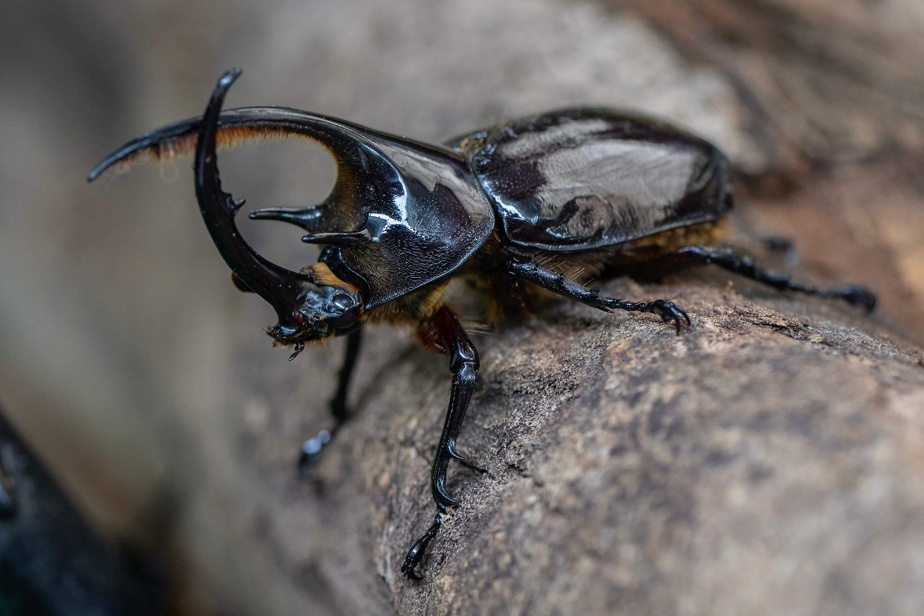(Tunja) An unusual environmental initiative mixing waste, larvae, cryptocurrencies and beetles is flourishing in the Colombian highlands.
German Viasus, an environmental and sanitary engineer, has identified a solution to the poor treatment of solid waste in the department of Boyaca (center).
Stocky white beetle larvae, up to 17 centimetres long, feast on the organic waste of thousands of residents for 16 hours a day.

PHOTO LUIS ACOSTA, AGENCE FRANCE-PRESSE ARCHIVES
White, stocky beetle larvae up to 17 centimeters long
The 53-year-old then sells their excrement as natural fertilizer to farmers in the area to encourage them to abandon chemical fertilizers.
“Beetles are the solution” to the waste management problem, Viasus says in the town of Tunja, capital of Boyaca, where his company is located.
Official sources estimate that at least 32,000 tons of waste, half of which is organic, are produced daily in Colombia. According to the United Nations, 11.2 billion tons of waste are produced annually worldwide.
Viasus’ method has already crossed borders: once their work is done, the beetles go abroad thanks to the exchange network he created, using a cryptocurrency.

PHOTO LUIS ACOSTA, AGENCE FRANCE-PRESSE ARCHIVES
“We must seek to preserve beetles, because they are responsible for the degradation of all the organic waste that man produces today,” explains German Viasus, an environmental and sanitary engineer.
A new alternative
In Tunja, a single landfill receives waste from 130 municipalities.
In recent years, conflicts have arisen between residents of neighbouring areas and the collection company over what they consider to be inadequate waste management.
Excavation equipment also buries the waste, raising fears of environmental pollution.
“If we do not hurry to do what is necessary in each municipality, we will not be able to continue sending [les déchets] “to the landfill,” says Soraida Ruiz, Boyaca’s environment secretary.
German Viasus then proposed his unexpected alternative. Every week, he receives 15 tons of garbage from neighboring municipalities, corresponding to a total population of about 40,000 inhabitants.
His employees pile up the garbage while the larvae feed on it.

PHOTO LUIS ACOSTA, AGENCE FRANCE-PRESSE ARCHIVES
Every week, German Viasus, an environmental and sanitary engineer, receives 15 tons of garbage.
“We must seek to preserve beetles, because they are responsible for the degradation of all the organic waste that man produces today,” he explains.
Kmushicoin
Following the failure of a similar project with earthworms, the engineer discovered these larvae by chance in a pile of garbage in 2000. The beetles he has today are their descendants.
The three species of beetles he uses are native to tropical ecosystems in Central and South America. After four months as larvae, the beetles continue their metamorphosis.
He then sells them in North America and Europe, but especially in Japan, where they are considered children’s pets.

PHOTO LUIS ACOSTA, AGENCE FRANCE-PRESSE ARCHIVES
The three species of beetles that German Viasus, an environmental and sanitary engineer, uses are native to the tropical ecosystems of Central and South America.
They also have a Colombian market, where they are considered by some to bring good luck.
In order to avoid bureaucracy and foreign currency exchange rates, the engineer, helped by a young computer expert, Carmelo Campos, created a cryptocurrency called Kmushicoin.
The idea is to “make [le processus de vente] “more instantaneous and direct,” explains the young man who started working on the digital currency project at the age of 15.
In cities like Tunja, Bogota and Medellin, a handful of merchants accept payments in cryptocurrency, whose name combines the Japanese translation of “horned beetle” (kabutomushi) with the word “bitcoin.”
” [Nous] “We’re suffocating under the rubbish,” warns Jefferson Bastidas, an electronics retailer who joined the initiative to help protect the environment.
